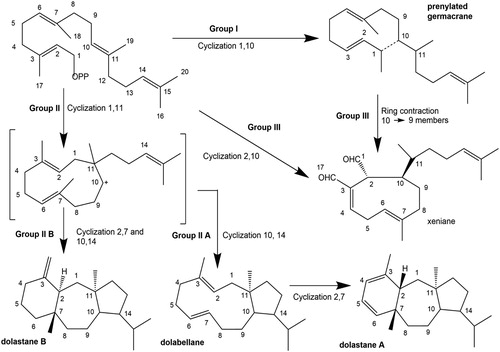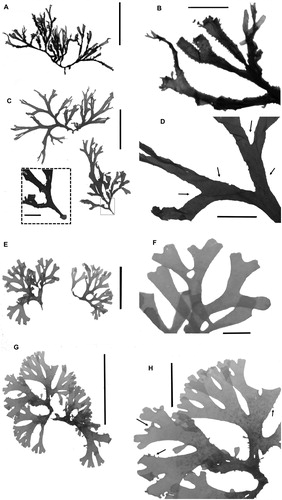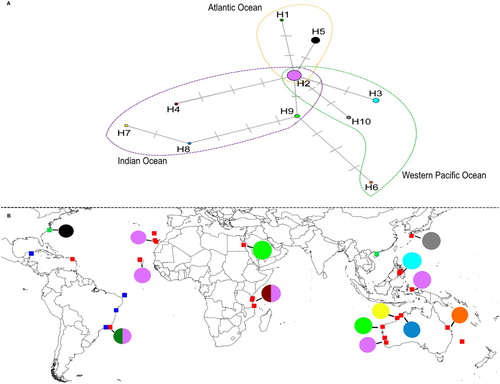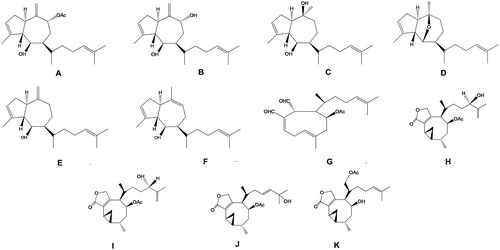Figures & data
Figure 1. Hypothetical biosynthetic pathway for the production of Group I, II, and III diterpenes by Dictyota and Canistrocarpus (Teixeira and Kelecom Citation1988, Citation1989; Teixeira Citation2010).

Table 1. Chemotaxonomic groups of diterpenes produced by Canistrocarpus and Dictyota species from Brazila.
Figure 2. Dictyota ciliolata. A, Voucher specimen from Rocas Atoll (HRJ 5516) (scale bar = 10 cm). B, Detailed view of the same specimen showing margins with conspicuous teeth (scale bar = 1 cm). C, Voucher specimen from Preta beach (HUNI 5776) (scale bar = 5 cm). Insert: detailed view of the discoid holdfast (scale bar = 5 mm). D, Detailed view of the same specimen showing margins with very small teeth (black arrows) (scale bar = 1 cm). E, Voucher specimen from Prainha (HUNI 5010) (scale bar = 2 cm). F, Detailed view of the same specimen showing smoothed margins (scale bar = 5 mm). G, Voucher specimen from Prainha (HUNI 5011) (scale bar = 5 cm). H, Detailed view of the same specimen showing sparsely cilio-dentate margins (black arrows) (scale bar = 2 cm).

Figure 4. Haplotype diversity of psbA sequences taken from D. ciliolata populations. A, Haplotype network of psbA showing the three geographically segregated groups; the haplotype shown in the intersection is the only haplotype found in all three regions. B, Distribution of the 10 haplotypes in the Atlantic and the Indo-West Pacific populations. Squares indicate locations where D. ciliolata had previously been studied. Red squares: DNA sequences available for a given population; blue squares: known diterpenes from a given population; green squares: DNA sequences and known diterpenes available for a given population. Map based on data from Cronin et al. (Citation1995); Cronin and Hay (Citation1996); De Clerck et al. (Citation2006); Tronholm et al. (Citation2010, Citation2012, Citation2013); Caamal-Fuentes et al. (Citation2014b); Cheng et al. (Citation2014); and the present study.


